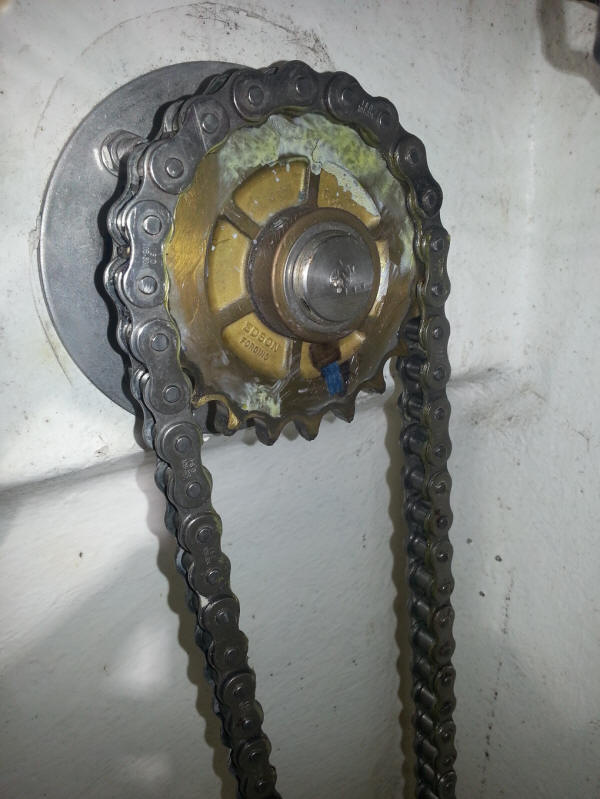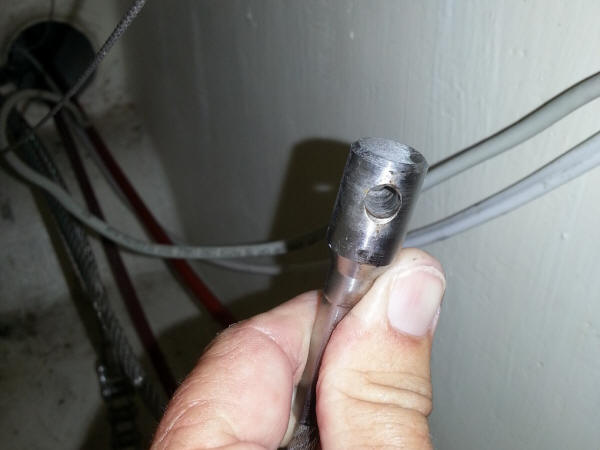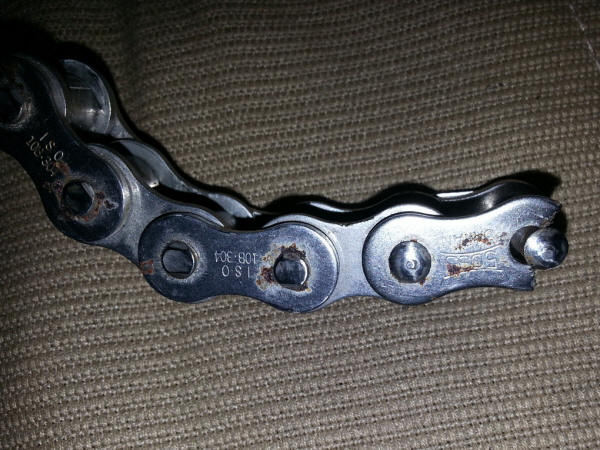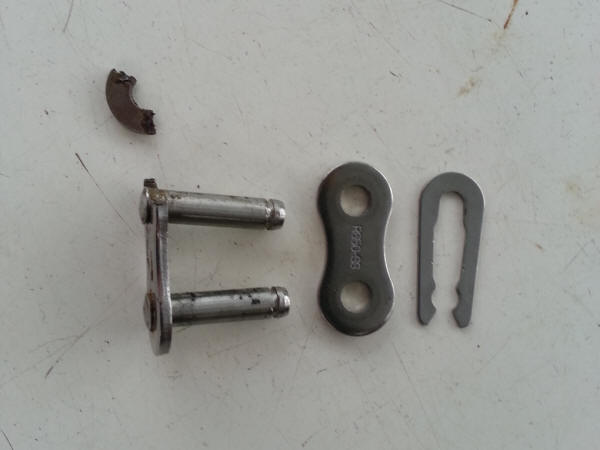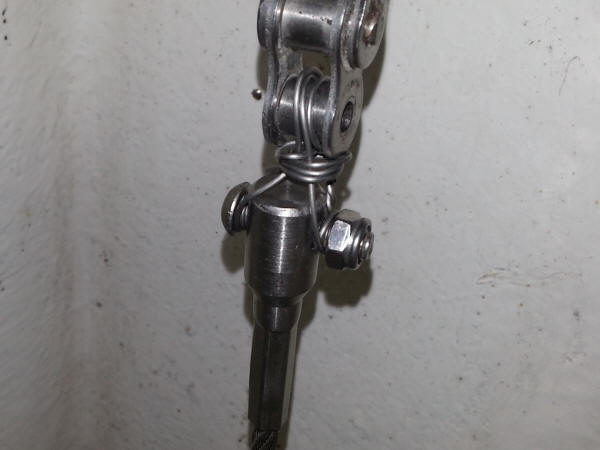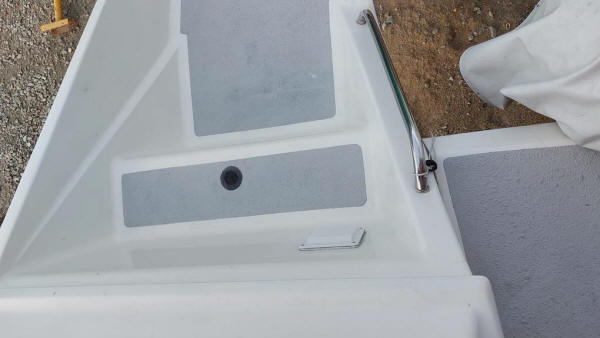|
St Francis |
|

STEERING
| Autopilot | Steering |
| Rudders | Emergency steering |
Last Updated:
06/07/2023
Autopilot
Our current autopilot came with the boat. It is a Raymarine ST 6001+ SmartPilot, which includes these components:
- The control head (the ST-6001+) (E12098)
- An S2 course
computer
- A fluxgate compass
- A rudder position sensor
- A Type 1
Linear drive
- A remote control
This has been a rock solid autopilot for us. We have had to replace the screen on the control head. This is the part that's mounted on the helm, they don't like sitting in the sun.
We now have identical components sourced off eBay for each of these items except the rudder position indicator and the remote.
We also have one of the CPT autopilots from the old Soggy Paws, just in case. No idea how we would install it, but if we were in a remote spot and couldn't make the Raymarine setup work with all our spares, it might be possible to cobble something together that would get us somewhere.
The St. Francis 44 has two rudders, and a long long connecting arm connecting the two rudders that is housed in a channel behind the cockpit. There are pulleys and a cable to bring the steering control to the cabinet in the main cabin just ahead of the helm.
These are connected to an Edson-based 21-tooth sprocket. In 2018, when we had a link break on the steering chain, we had to source new chain, and at that time replaced the cable too.
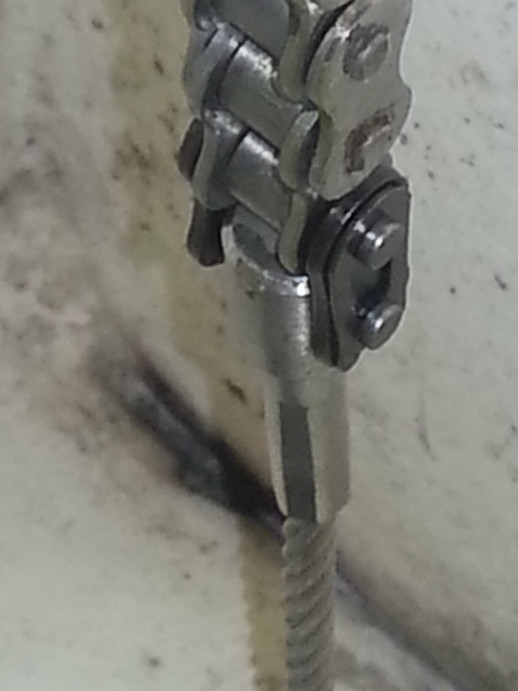
What broke on our system was the "master link" that connects the chain to the cables. It turns out that this is commonly used in motorcycles, so we were able to source one from a local Harley shop.
Our broken link
For a few days we gently steered with some heavy seizing wire in place of the master link.
Here are my notes from trying to find how much cable and chain to buy when in the US (with the boat in the Philippines).
The numbers on the steering system (from the back, inside)
don't correspond with current Edson numbering.
But, we do have 5/8"
chain, and we have 21 Teeth on the sprocket, which appears to be bronze. The
number on the sprocket is A-1009, and the number visible on the back of
bronze piece behind the sprocket is B-750L.
Chain length is approx 43
1/2 inches or 110 mm (Approx 70 links long. Dave counted 35 links, but only
counted every other link, and he probably included the connector links. So
real length is 2x that).
What St. Francis sent me in an ordering list
from SF #43
Bulkhead Steerer 21 Tooth-Long Shaft EDSON with Brake
Master Link Set 5/8"
Roller Chain 5/8" - 1.170mm (I think this is
METERS=46")
Control Twin Top Mount KE4 - Morse
Steering Wheel
Stainless Steel 32" Dished 5 Sproke
Steering Cable 7x19 - 6mm
6mm
Thimbles S/S
Rubber Boots
10mm S/S Eye Nuts
6mm Bull Dog Clamps S/S
Seastar Control Cable 8.000m
Seastar Control Cable 7.500m
Seastar
Control Cable 3.500m
Seastar Control Cable 3.250m
Note tht the
only 21-tooth part number I could find on the Edson site is 855-2-21 21
Tooth Sprocket for 5/8” #50 chain
What Jaco Hamman from St. Francis
Factory said was this:
1. We usually bought one length cable of 20
meters--the easier to flex cable not the hard stiff one. It had an
attachment on both the ends to connect to the chain. The cable was a 6mm and
was connected to the steering tube with a 6mm thimble and two bulldog clamps
on both sides. The cable was later cut into two pieces. The port side being
the longest and the stb side the shortest.
Unfortunately I do not have
those lengths anymore.
2. Attached was a order list for one of the
44's that time (which indicated the wire length was 10m, see above). The
wire was ordered at 10m on it. Now I am not sure about the length.
The St. Francis 44 is equipped with an emergency steering mechanism which is a hole drilled through the starboard aft step to fit an emergency tiller on the top of the starboard rudder.
The hole in the aft steps to provide exterior access to steering system
Where the hole joins to the rudder post with emergency tiller.
At one point while sailing through eastern Indonesia, we hit a semi-submerged log so hard with our rudder that it bent the rudder post and jammed the heel of the rudder into the bottom of the boat. We couldn't steer!
Fortunately, we managed to return to the sheltered harbor we had left a few hours before. The rudder jammed in the "almost straight ahead" position, so we could use sail trim and engines to make minor steering corrections.
We spent a day in the water trying to drop the rudder, and finally took a chisel and chiseled off the top edge of the back end of the rudder. However, once clear, the rudder still wouldn't move. The rudder post had bent enough that it was jammed inside the tube.
We finally just loosened the clamp on the top of the rudder post that controlled the steering on that side, and got the last 500 miles to home base on one rudder. The boat steered OK with just one rudder in most cases, except when the sails weren't balanced. Then the autopilot had trouble. But it got us home.
We had a machine shop straighten the rudder and all was good until we encountered an unyeilding coral head. Usually we ground on the keel before hitting the rudder, but this time (2022) we managed to straddle the coral mound just right, and bumped the rudder.
This time, it didn't bend very far (we didn't hit very hard). So steering was "stiff" but not totally constrained. We prayed that we wouldn't overstress the autopilot trying to run the steering system with a stiff rudder. We made it to Malaysia without incident where we got the rudder straightened again.

